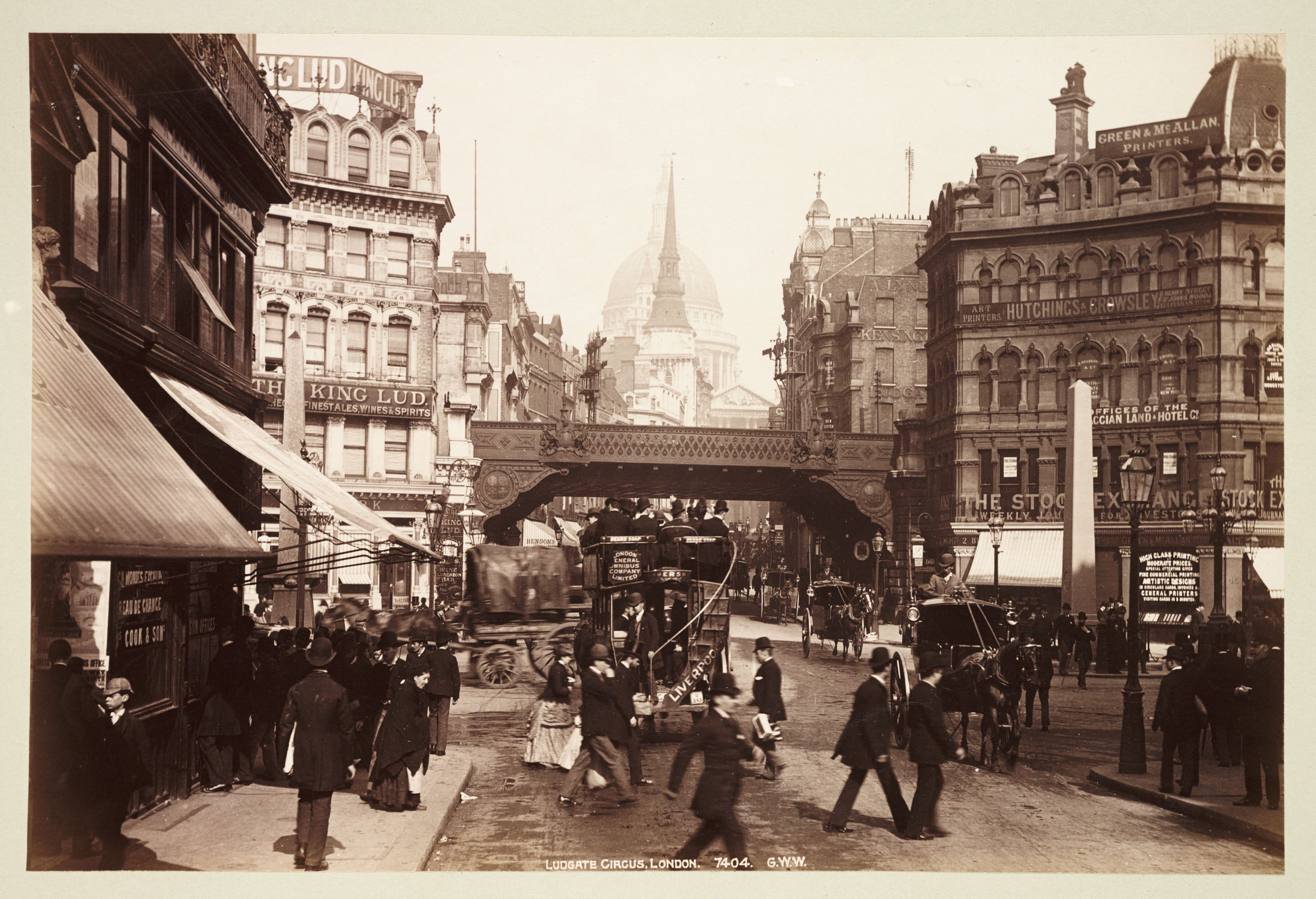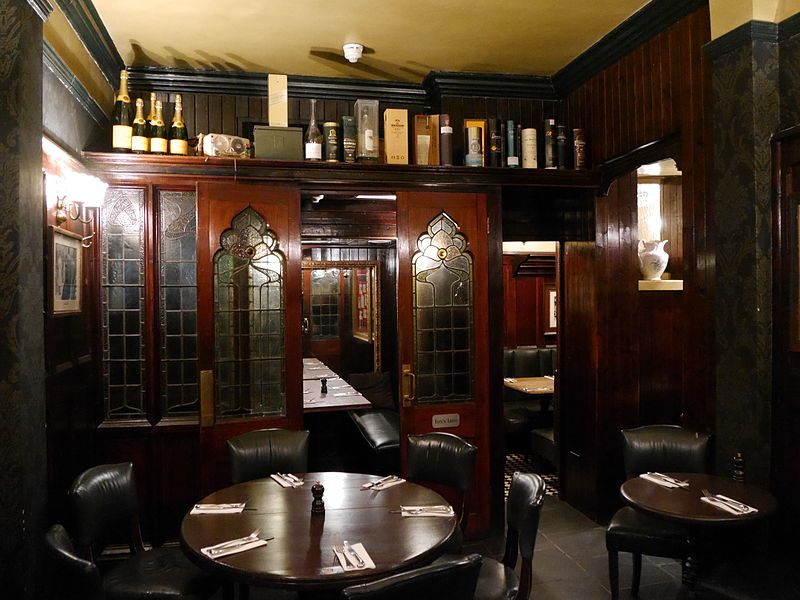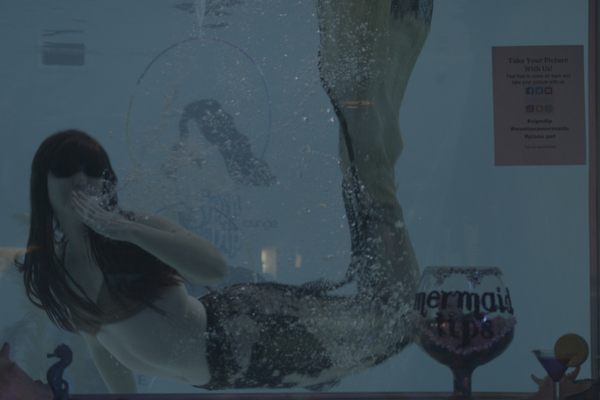Remembering When London’s Pubs Were Full at 7 a.m.
Drinking eight pints of beer a day was once routine.

It’s 7 a.m. at The Market Porter in South London, and I’m eyeing the choices behind the bar. “You alright there?” the barman asks. This is the first time I’ve stopped by the pub on my way to work in the morning, and I have no idea what to get. Honestly, what I want is another coffee. But eventually I settle on a cider: the “Traditional Scrumpy,” which is a feisty six percent alcohol. As the morning sun pokes through the patterned glass windows, it goes down a lot better than I expect.
The Market Porter by Borough Market is one of London’s last traditional pubs that is open at this early morning hour. The others—The Hope and the Fox and Anchor—are a little north of the river, by Smithfield Market. These three holdouts are the only historic London pubs left where the almost-gone tradition of having a beer with breakfast is alive and well. They are the legacy of a time when Europe had a very different relationship with alcohol, and when a stiff morning drink was as normal as tea and coffee is today.
“In the past, everyone drank all day—men, women, and children,” says Paul Jennings, pub historian and author of A History of Drink and the English. As recently as 100 years ago, all London pubs opened in the morning, and they’d fill with people having an early drink.
Nowadays, most people in earlyhouses such as The Market Porter have just come off a night shift and want an after-work drink. But some patrons are fresh out of bed. Three men and two women are gathered in the corner drinking half pints; they’re colleagues who work nearby. “We’ve walked past this place so many times, wondering who drinks at this hour,” says one of the women. “We thought that one day, we should go in.” They ask to remain anonymous, as they have to go into work shortly.

It’s no wonder—drinking before work is fairly taboo in Britain, and most people wait until at least lunchtime. Back in the day, though, workmen would easily drink six to eight pints of beer every day, says Jennings. For what else could they drink? The water often came from sewage-ridden sources such as the River Thames, and there were no soft drinks. Tea and coffee eventually arrived, but they were expensive, foreign imports and, even once they became more common, subject to heavy taxation. “So people drank beer with their meals during the day. That lasted well into the 19th century for many people,” says Jennings.
This doesn’t necessarily mean people were lolling around drunk all day. There were two kinds of beer, says Jennings: “strong beer” at about 10 percent alcohol, which was primarily for men, and “small beer” at two to three percent alcohol, which was primarily for women and children (although these were not hard and fast rules). “Monastery records show monks would have an allowance of eight pints a day. But they’re drinking that steadily through the day with food. If you’re used to drinking, you can absorb that without getting falling-down drunk,” says Jennings. “And the small beer wasn’t getting anyone drunk.”
This occurred during a time when alcohol was viewed very differently in society. Often, beer was the only available beverage. A toast was key to sealing business deals, and to turn down a friendly drink would mark you as an eccentric at best or antisocial at worst. Workers commonly received their wages in pubs, which the first factory owners used as pay offices. In the 1700s, when the Gin Craze hit London and caused so much addiction and violence that the liquor was nicknamed “mother’s ruin,” the government response was to make beer more widely available as the lesser evil.

Absolutely everyone drank beer. “Farm workers would drink seven to eight pints of quite weak beer a day during harvest time. Drinking all day was to refresh and rehydrate, and to give you some calories,” says Martyn Cornell, beer writer and author of Strange Tales of Ale. “Porter beer was so called because it was drunk by porters—the men who would fetch and carry around the streets of London. They would sit down outside a pub, put their load down, and order a quart to keep them going.”
Beer wasn’t just some kind of energy drink, though—people drank to excess back then too. Newspapers from the era are full of stories of people falling off horses, crashing buggies, or having work accidents because they were drunk. But the idea of alcoholism as an illness or addiction didn’t really enter the culture until the 19th or 20th century. “Heavy drinking was considered immoral. It was seen as a sin, a subset of gluttony,” says Jennings. “Drinking was an even bigger problem [back then than it is now], in the sense of accidents, drunken behaviour, and violence.”
The ill-effects of excessive drinking contributed to the temperance movement in the mid-1800s, but the first major effort to restrict pubs’ opening hours only came during World War I, when pubs had to close in the mornings and afternoons. Keeping workers off the sauce was better for the war effort, the government determined, plus it saved grain. An exception was made for market pubs, which were seen as key to market trading: Buyers and sellers would negotiate deals in the pub, and then drink to seal it. This is why the remaining earlyhouses in London have been able to keep their doors open from dawn all these years: They are all historic market pubs.

Morning drinking permanently fell out of favour after the war, in large part because licensing laws made it illegal for most pubs to be open. People became more aware of the health risks, drinking by children became frowned upon, and “proper” ladies soon came to prefer a nice cuppa over a rowdy pub. There are still places (such as the Czech Republic) that keep up the morning drinking tradition, but those days are long gone in Britain. Nowadays it’s rare to find anyone popping into The Market Porter, The Hope, or the Fox and Anchor before work. Still, these pubs are remnants of a time that’s not as long ago as it may seem. Until World War I, pre-work drinks were as common as Happy Hour.
While my morning cider at The Market Porter seemed invigorating at first, I have to admit that I took a lunchtime nap that day. Maybe the workmen of the 18th century were made of sturdier stuff, or maybe they just developed a tolerance. I wouldn’t suggest a morning tipple if you have to work in an office, but if you have the day off, a pint alongside a proper English Breakfast is really not a bad way to start the day.
Gastro Obscura covers the world’s most wondrous food and drink.
Sign up for our regular newsletter.




































Follow us on Twitter to get the latest on the world's hidden wonders.
Like us on Facebook to get the latest on the world's hidden wonders.
Follow us on Twitter Like us on Facebook